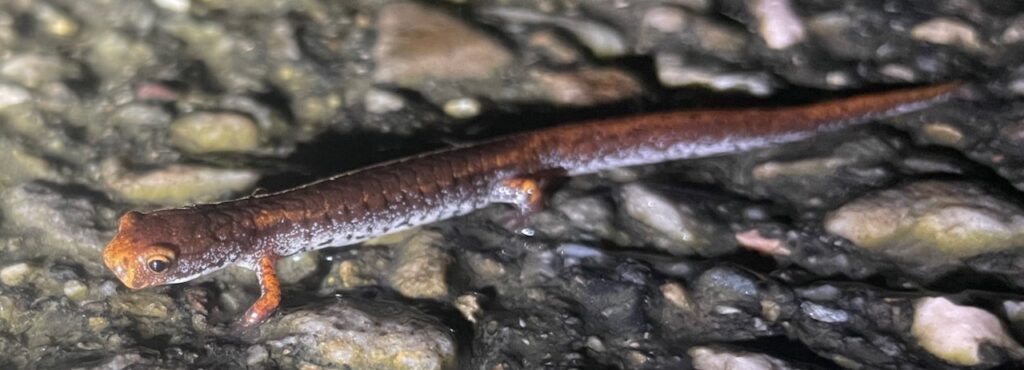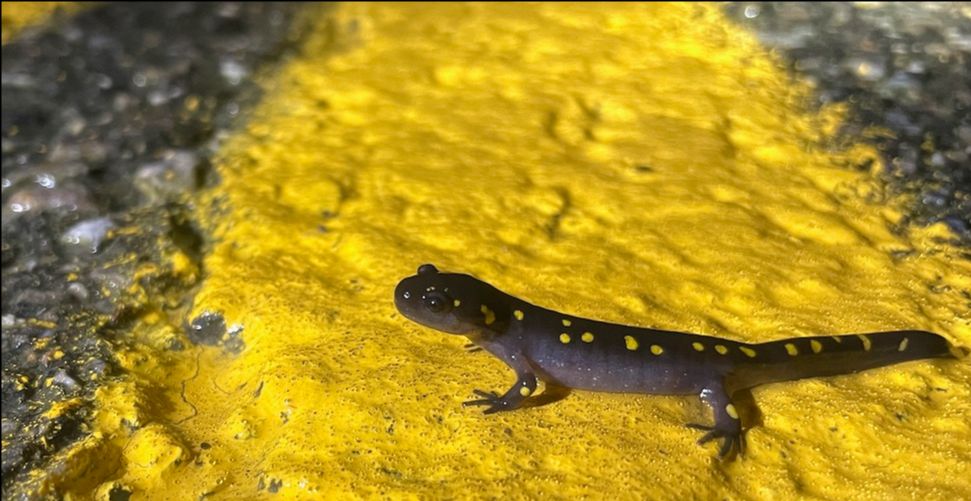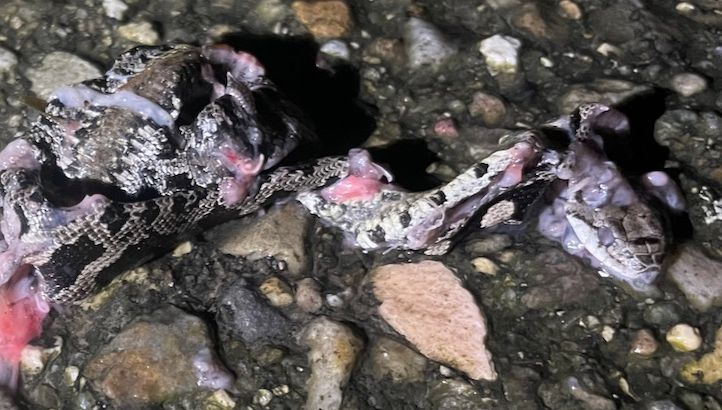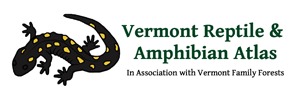Herp Update: New Format & Recent Sightings – October 27, 2023
New Format and Recent Sightings
Folks, as a result of the number of people who have requested to receive our Herp Updates, we have moved to a new format using Mailchimp. For friends and family to subscribe: visit vtherpatlas.us2.list-manage.com/track/click?u=63c5df7985d413f2ea204e690&id=c48959eb4b&e=f3cfc2a496
There is a lot of interesting herptile activity taking place and I am hoping some of you will take advantage of it and send in some reports before herptile season ends. The current forecast looks good for snakes to move this afternoon and amphibians to move Sunday night (or early Monday morning)
Recent and Upcoming Herp Activity
Amphibians (and some reptiles) still on the move and calling
I was out of state last weekend, but my assistant Kate Kelly was here in Vermont and she got out on both Friday and Saturday nights after the rains. On Saturday night she visited the amphibian crossing area on North Street in New Haven and found an impressive total of 13 herptile species in an hour and eleven minute walk through the entire crossing area. Her list included five species of salamanders, six species of frogs, and two species of snakes. The 24 individual salamanders consisted of Blue-spotted group (5, this includes related hybrids), Four-toed (12), Spotted (3), Northern Dusky (1), and Eastern Red-backed (3). Northern Dusky Salamanders are not migratory and don’t travel very far from their home seepage area or stream edge. At North Street, there are some seeps within the ditch on the uphill side of the road. As a result this species can sometimes be seen out foraging on the road surface. Seven of the salamanders (29%) had been run over. The Four-toeds were highly clustered, including two that were following exactly the same path. We see this fairly often where it appears a group of salamanders are in a line formation crossing the road. Salamanders don’t have very good distance vision, so we think this may be the result of following a scent trail.
The 22 individual frogs (this term includes toads) she saw were American Toad (7), Spring Peeper (3, plus 1 calling from the woods), Wood Frog (4), Pickerel Frog (2), Gray Treefrog (5) and American Bullfrog (1). This is late in the season for Gray Treefrogs, American Bullfrogs, and American Toads to be active but the temperature that evening was unusually warm at 56 F. American Bullfrogs overwinter underwater, so they would not be heading uphill to terrestrial overwintering locations. However, they do travel overland to colonize new locations and there is a small lake uphill of this crossing area where this frog probably originated. Our bullfrog needs to find some deep permanent water soon in which to overwinter. I doubt that any of the other frogs were headed to overwintering locations, rather I suspect they were just out for a late season snack. Fifteen of the 22 frogs (68%) had been run over. On her Friday outing she also heard and recorded additional Wood Frogs calling (download link is below, turn it up very loud and listen carefully).
In addition Kate found two species of snakes dead on the road. I suspect they were both moving during the previous afternoon, but we do not know that for sure. The single DeKay’s Brownsnake is not a surprise for this time of year, or for the area (Lake Champlain Basin with both wetlands and rocky forested uplands). However, finding an Eastern Ratsnake away from its den this late in the season is a surprise. The ratsnake she found was this year’s young and was probably looking for a denning area for the first time in its life. Most adults would already be back at or near their dens. Some of her photos are attached.



Bethany Barry also got out on Saturday night at a Cornwall crossing site and her finds included Blue-spotted Salamanders (12), Wood Frogs (14), and American Toads (1).
Annika Holtan sent in a report and photos of an entire family of twelve (!) young Eastern Milksnakes basking in her yard in Fayston this Wednesday. She reports that there were originally 13, but one disappeared over the last couple weeks. I hope the remaining youngsters find a good den soon.
Sam Spaulding reported the first report ever of a Four-toed Salamander from Orwell. Somehow this critter got inside a boot that was on their porch.
These are just a small subsample of the over 38 reports that have come in over the last week.
Download a fall Wood Frog call here, turn it way up and listen carefully: listen (vtherpatlas.us2.list-manage.com/track/click?u=63c5df7985d413f2ea204e690&id=a1878403b4&e=f3cfc2a496)
Annual Report
Here is another piece of our annual report for Vermont Fish and Wildlife’s State Wildlife Grant:
During this period, we personally visited 59 towns (or cities, gores, or grants) to gather new records. Many survey trips focused on those “towns” (including cities, gores, and grants) that have had the least survey effort. This is usually the result of low numbers of residents. Other trips focused on species that are not often reported by citizen scientists. These include the Northern Dusky Salamander (Desmognathus fuscus) and Spring Salamander (Gyrinophilus porphyriticus). We filled in many data gaps (species/town combinations) with these trips.

